Level of difficulty: 1.5
Procedure:
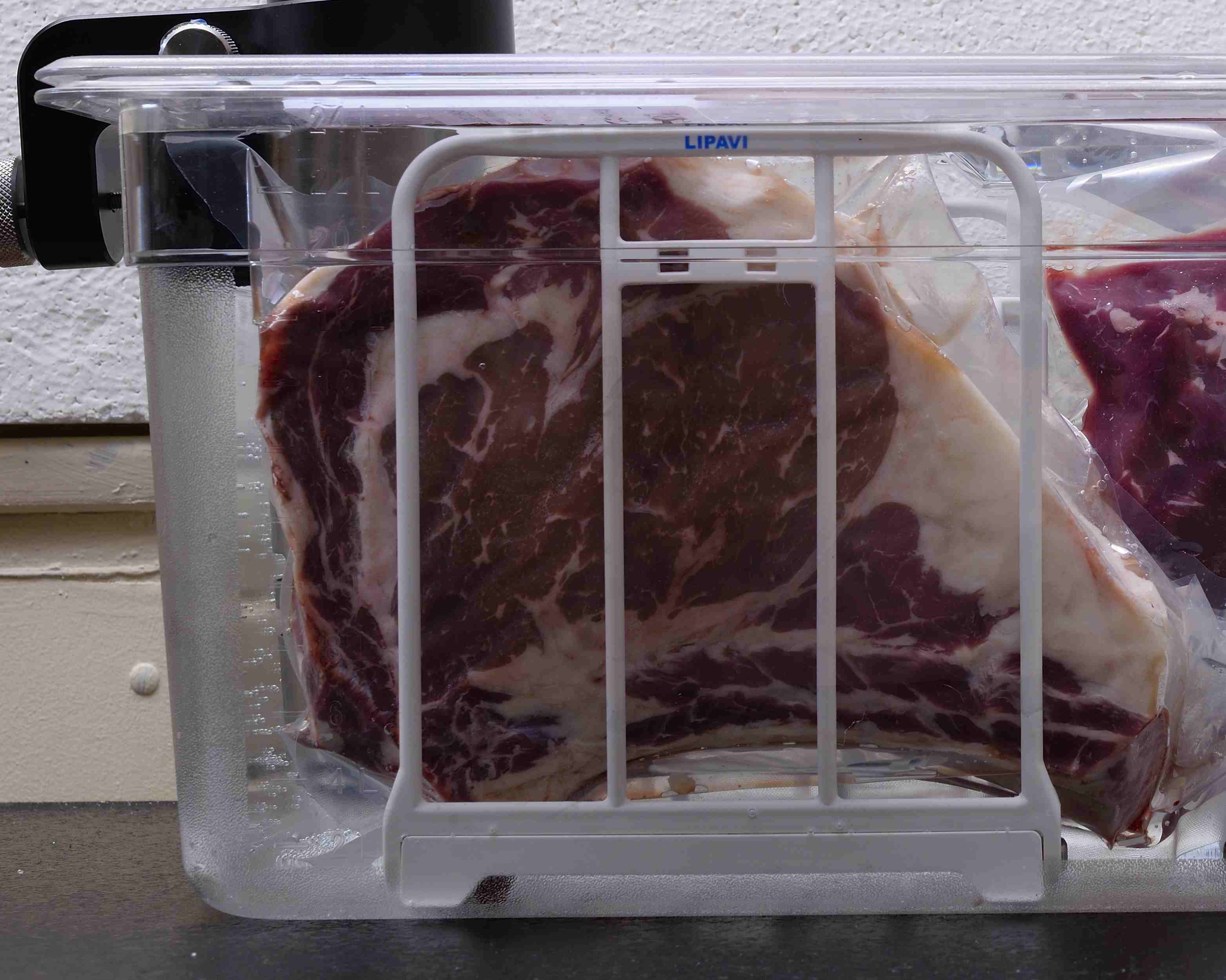
How do you like your steak?
The exact definition of “rare,” “medium rare,” a point,” etc can be very subjective. A little practice will help you learn just exactly what temperature corresponds to your preferred appearance of doneness. Here are some commonly accepted guidelines.
Rare: 125 F/52 C.
Medium Rare: 129 F/54 C.
Medium: 135 F/57 C.
Medium Well: 140 F/60 C.
Well, 150 F+/66 C+.
Stage each unseasoned rib eye steak into a dedicated vacuum bag. Seal and sous vide process at the temperature best suited to your preferences for at least three hours. If you want to process several steaks at different degrees of apparent doneness, click HERE for the “how to”…
For enthusiasts who like their steaks extremely rare, sous vide processing at temperatures as low as 122F /50 C for up to three hours is safe. The steaks will not achieve pasteurization at this temperature, and should then be consumed immediately, just as one would if sous vide were not being utilized in the first place.
Service:
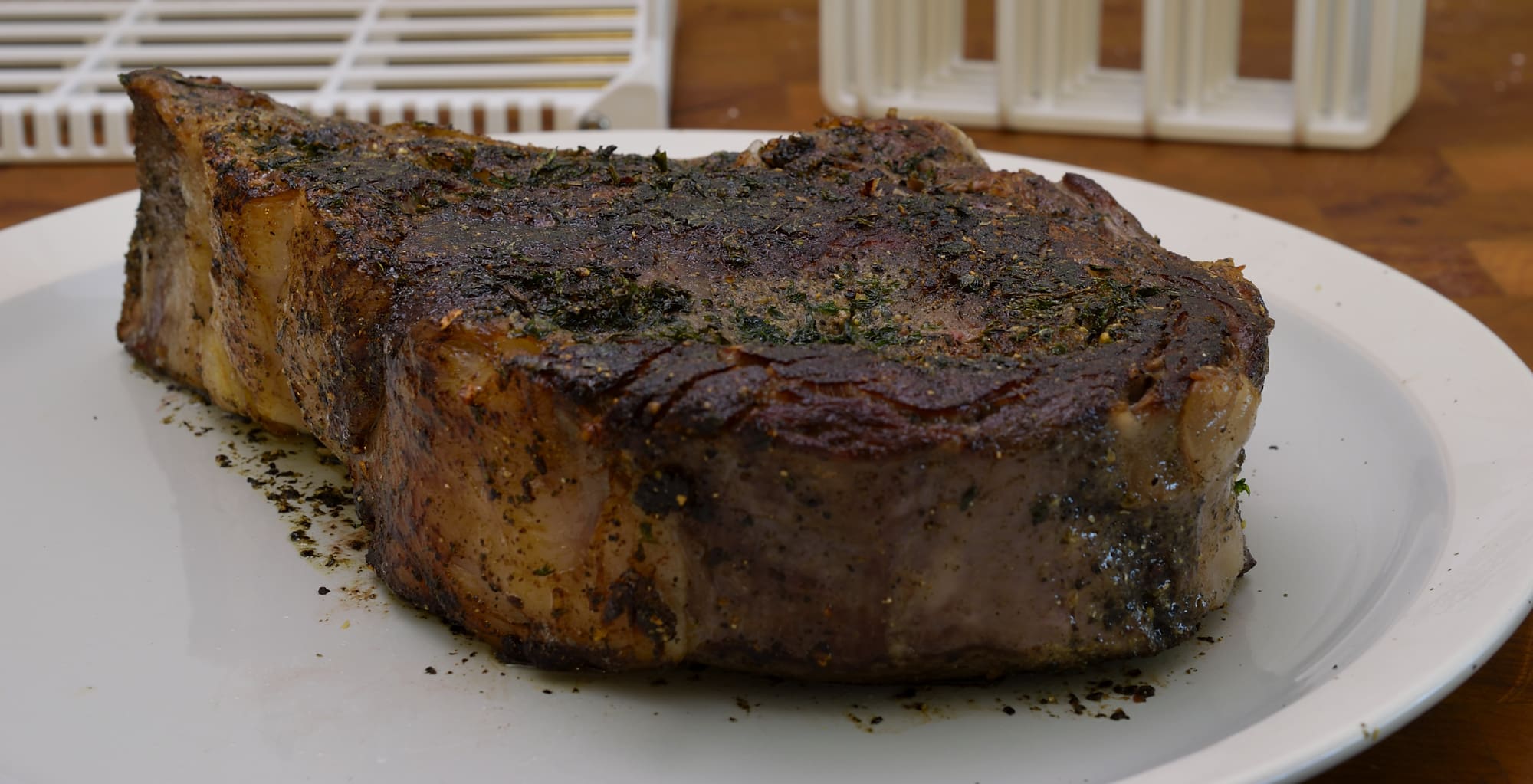
Once your steak(s) are processed, they are ready to be seasoned, seared and served. Allowing the steaks to rest at room temperature for up to 15 minutes will allow the surface to cool off slightly. This serves to prevent the internal temperature of the steak from exceeding the original target temperature during the searing process. Remove the steaks from the bag and harvest the juices; save for later use or discard.
Use a fork to vigorously beat the egg white with 1 oz./30 ml water. Use this solution to slightly moisten the steak–this will create a sticky surface for the seasonings to cling to..
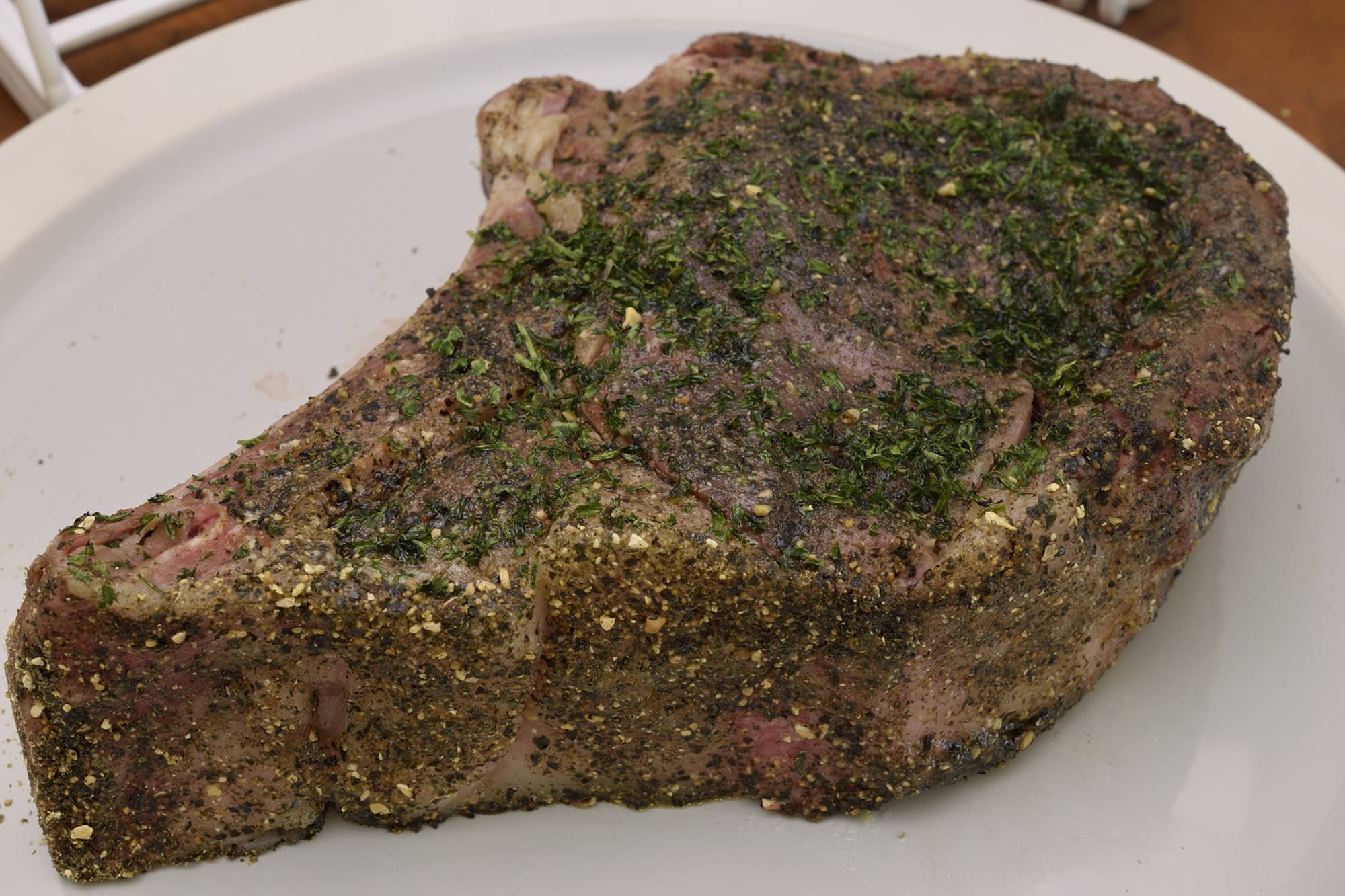
Sprinkle the steaks with the seasonings. Season the edges of the steak too, especially when they are thick! Seasoning is always optional for those with dietary limitations–the seasonings are not part of the chemistry.
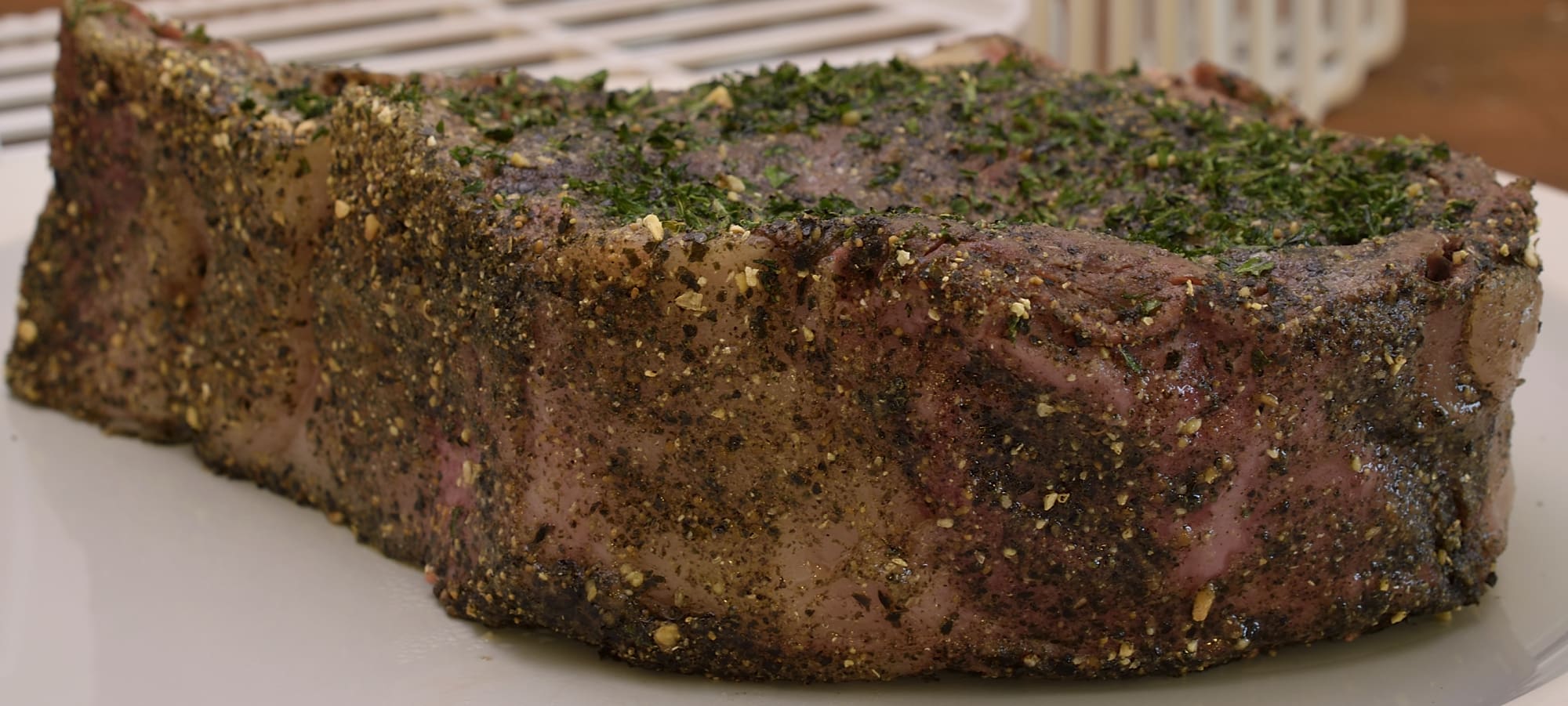
Drizzle or spray with a small amount of oil. Heat the surface of the pan to approximately 375 F/190 C–you may have to put a drop of oil in the pan in order for the infrared thermometer to register properly. Adding more oil than that to the pan at this time may cause it to burn–this is why I lubricate steaks!

Sear individual steaks one at a time in the hot pan. Avoid moving or excessively flipping the steak–this cools the pan. The searing process should take no more than one minute per side. If the steak is thick enough, which it should be, you can stand it on edge and lean it against the side of the pan to fully caramelize the surface. The steak does not require any further cooking so one need only achieve the desired color. Remove from heat and coat the steaks with a little butter; allow to rest for two minutes or so.
Note:
At service, if the steak is served whole it should be presented as depicted above–with the bone away from the diner. And there is a reason! If the bone is directly in front, your guest is going to have to either turn the steak around or reach over to the back. One should never inconvenience a diner unnecessarily.
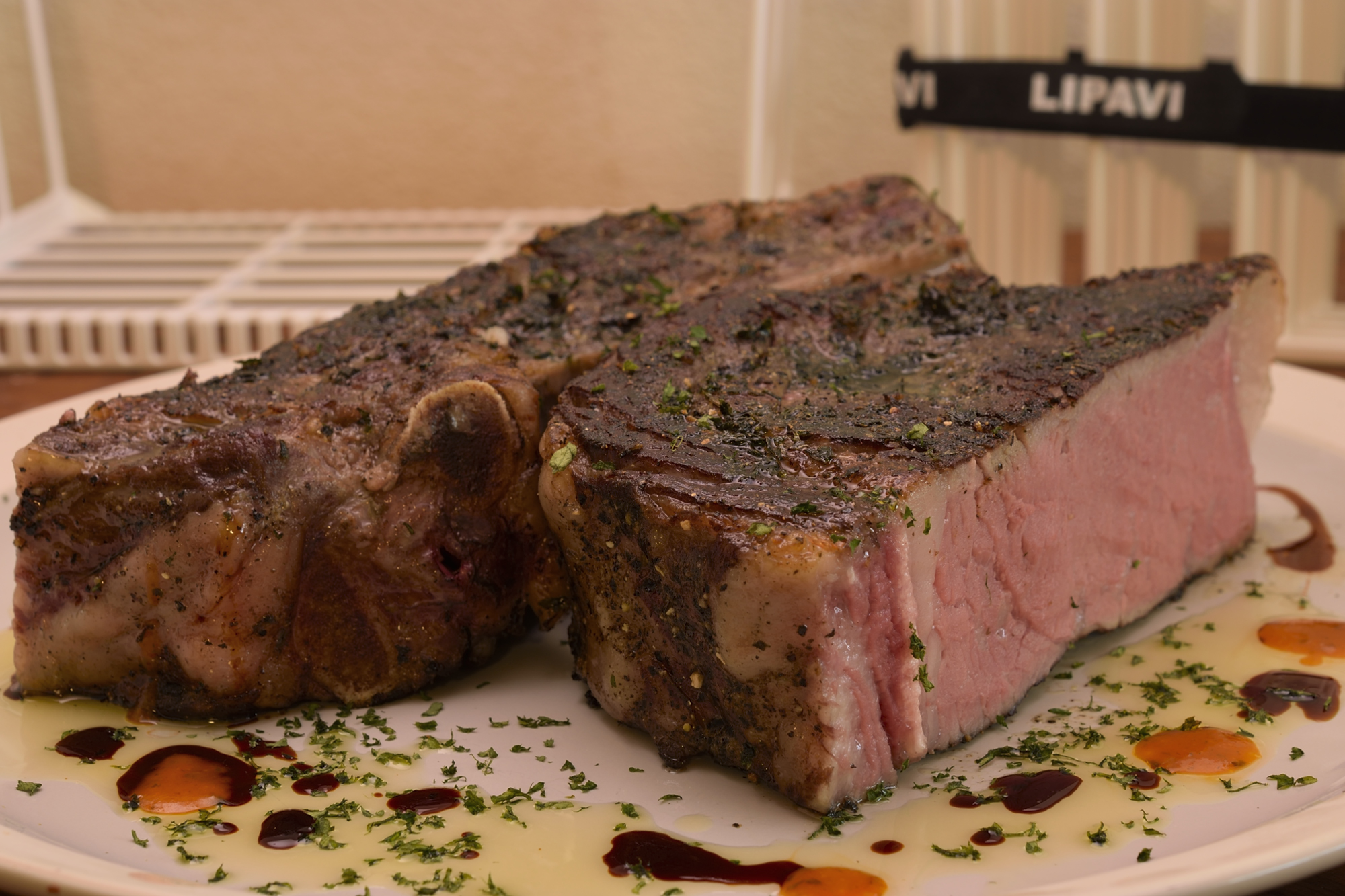
This steak was processed at 130 F/54 C for 6 hours. As per your convenience, the interval can range anywhere from 3 hours to 8 hours, because at the precise temperature, the steak cannot overcook. Even though tenderization can occur at these temperatures, the process is so slow as to be undetectable within the range outlined.
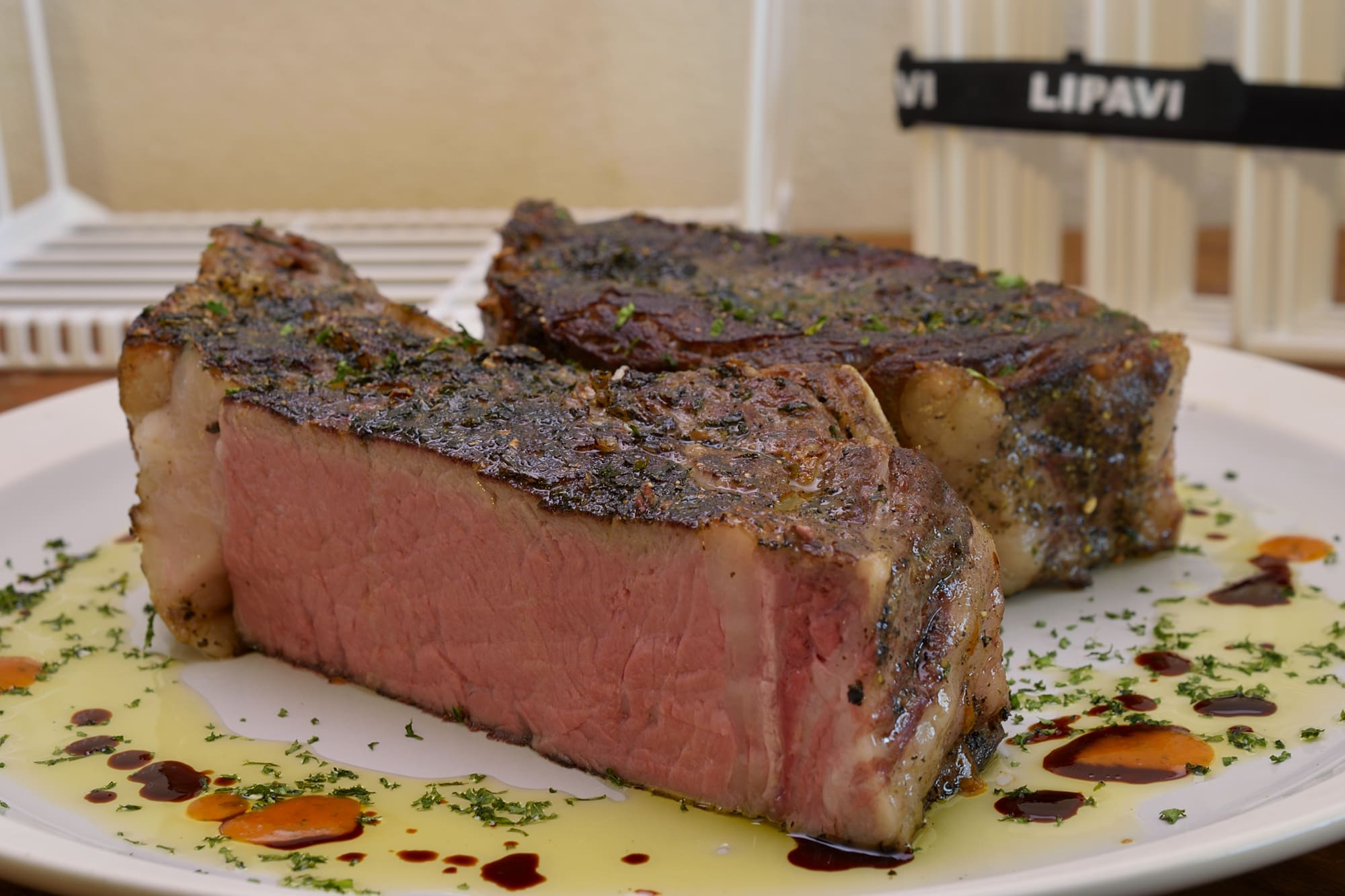
Many of my erstwhile contemporaries opt for the “chunky” presentation to display the apparent doneness at service to the diner. A few drops of extra virgin olive oil and balsamic syrup provide a novel flavor profile. I also drizzled a few drops of tomato vinaigrette around the plate, and, of course, chopped parsley, my signature.
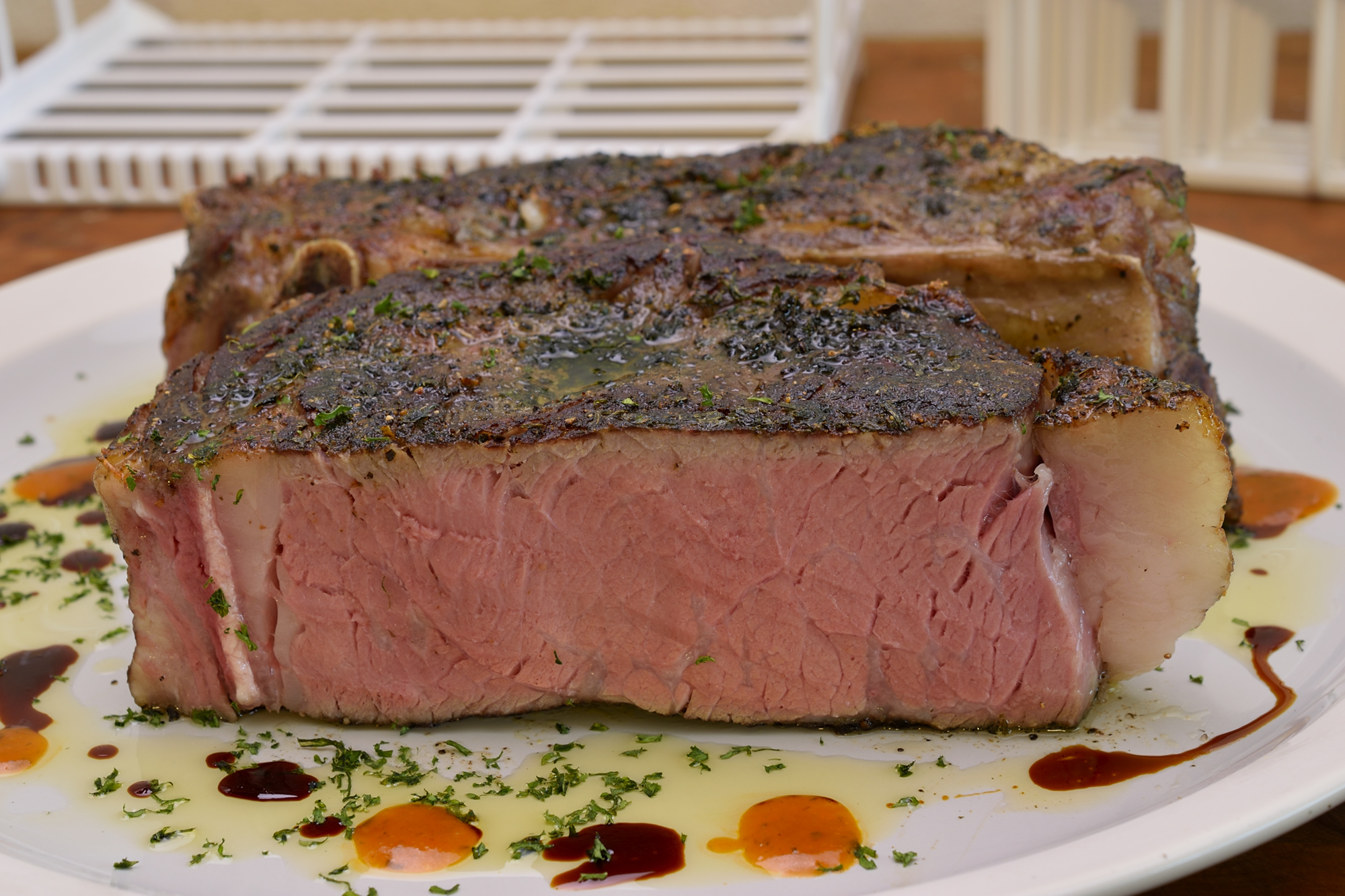
Norm King
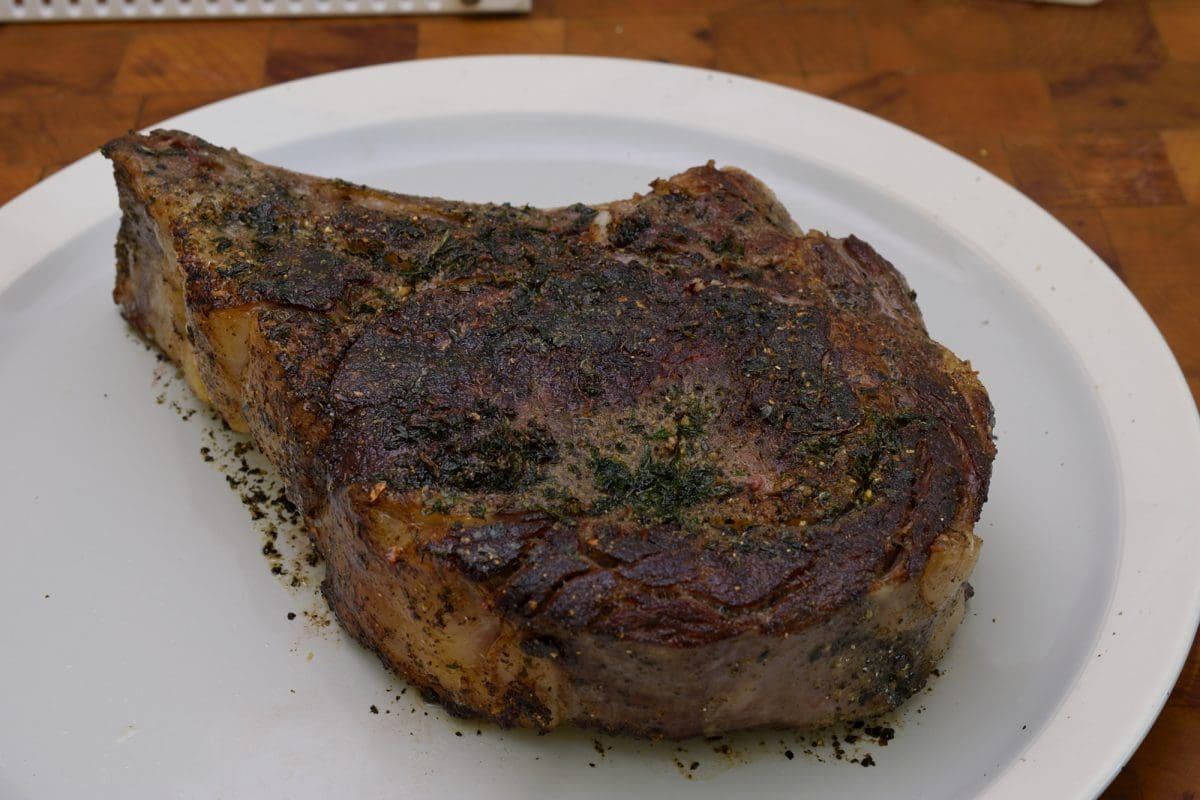
Hi, for all time i used to check blog posts here in the early
hours in the dawn, as i love to gain knowledge of more and more.
Feel free to surf to my blog; vpn code 2024
You could definitely see your skills within the article you write.
The world hopes for even more passionate writers such as you who are not
afraid to say how they believe. At all times follow your heart.
Also visit my web page – vpn coupon 2024
I every time spent my half an hour facebook vs eharmony to find love online read this blog’s articles
or reviews daily along with a mug of coffee.